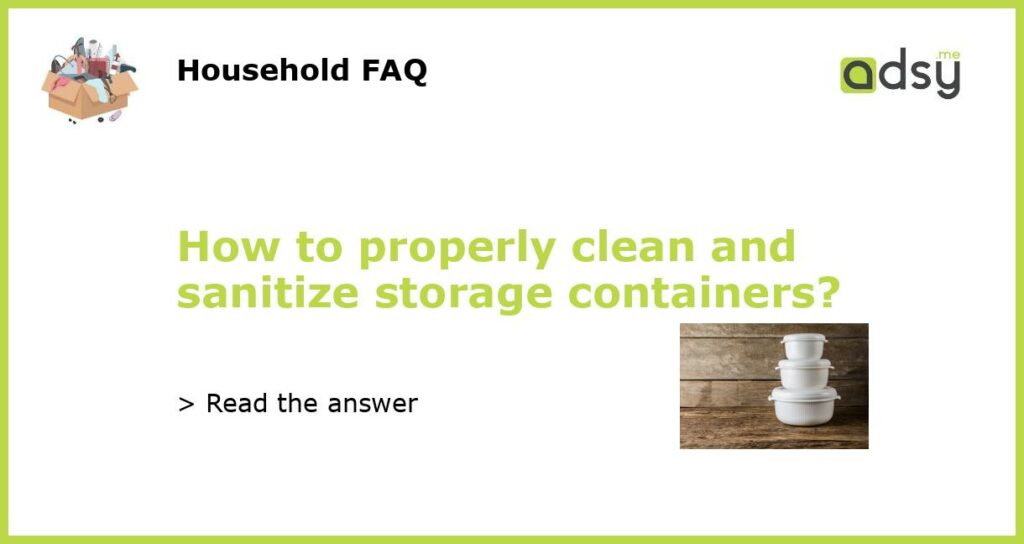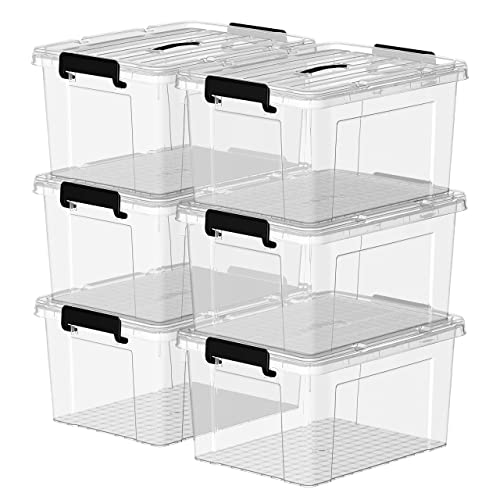Why is proper cleaning and sanitizing of storage containers important?
Properly cleaning and sanitizing storage containers is crucial for maintaining food safety and preventing the growth of harmful bacteria. When containers are not cleaned and sanitized correctly, they can become a breeding ground for bacteria, mold, and other contaminants. This can lead to foodborne illnesses and spoilage, which can have serious health and financial consequences.
Steps to clean and sanitize storage containers
It is essential to follow a specific process when cleaning and sanitizing storage containers to ensure effectiveness. Here are the steps:
- Rinse: Begin by rinsing out the storage container with hot water to remove any remaining food particles or residue.
- Wash: Use a mild detergent or dishwashing liquid to thoroughly wash the container, inside and outside, using a sponge or brush. Pay extra attention to any corners, seams, or grooves where food particles may hide.
- Rinse: Rinse the container thoroughly with hot water to remove all traces of detergent.
- Sanitize: To sanitize the container, immerse it in a bleach solution or use a food-safe sanitizing agent according to the manufacturer’s instructions. Alternatively, you can also run the container through a high-temperature dishwasher cycle.
- Dry: After sanitizing, allow the container to air dry completely before using or storing it. Moisture can promote the growth of bacteria and mold.
Materials needed for proper cleaning and sanitizing
To properly clean and sanitize storage containers, you will need the following materials:
- Hot water: Hot water is essential for rinsing, washing, and sanitizing the containers effectively. Make sure the water is hot enough to kill bacteria.
- Mild detergent or dishwashing liquid: Use a mild detergent or food-safe dishwashing liquid for washing the containers.
- Bleach or food-safe sanitizing agent: A diluted bleach solution or a food-safe sanitizing agent is needed for sanitizing the containers. Follow the manufacturer’s instructions for proper dilution ratios.
- Sponge or brush: Use a sponge or brush to scrub the containers and remove any stubborn food particles or residue.
- Drying rack or air drying: Ensure you have a proper drying rack or enough space for the containers to air dry completely.
Tips for effective cleaning and sanitizing
To ensure the proper cleaning and sanitizing of storage containers, consider the following tips:
- Regular cleaning: Clean containers after each use to prevent the buildup of bacteria and food residue.
- Use appropriate containers: Choose storage containers made of materials that are easy to clean and sanitize, such as glass or food-grade plastic.
- Check for damage: Inspect the containers for any cracks, chips, or damage that may compromise their cleanliness and effectiveness.
- Label containers: Label storage containers with the date and contents, so you can easily track their freshness and prevent food spoilage.
- Monitor storage temperature: Store containers in a cool, dry place to minimize the growth of bacteria and mold.
Importance of training and education
Properly cleaning and sanitizing storage containers is a crucial aspect of food safety, but it requires knowledge and training. Businesses in the food industry should implement proper training programs for their staff to ensure they are equipped with the necessary skills and knowledge to clean and sanitize containers correctly. This includes understanding the correct cleaning procedures, identifying appropriate cleaning agents, and recognizing signs of contamination or damage. Ongoing education and monitoring will help maintain a high level of hygiene and food safety standards in the workplace.






